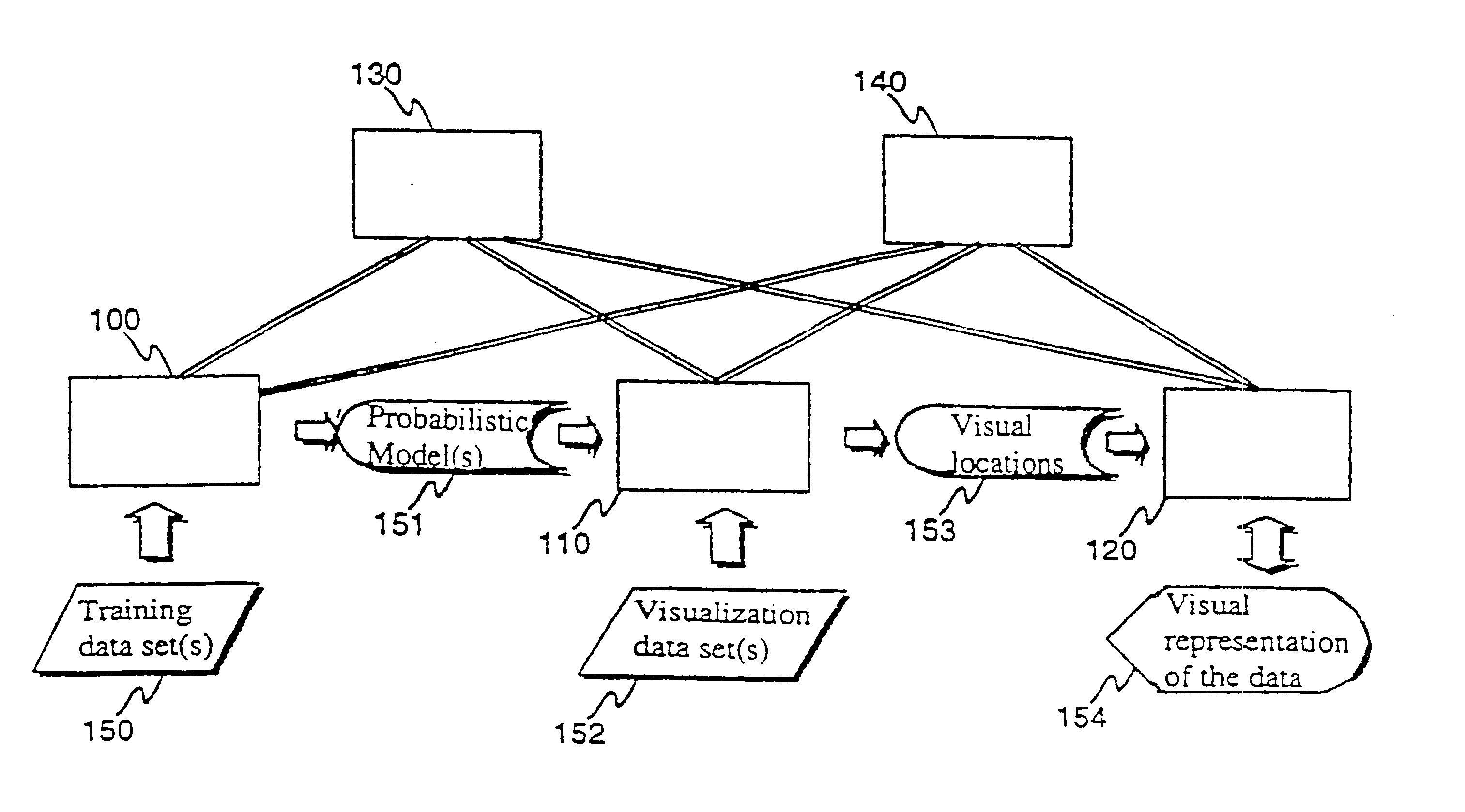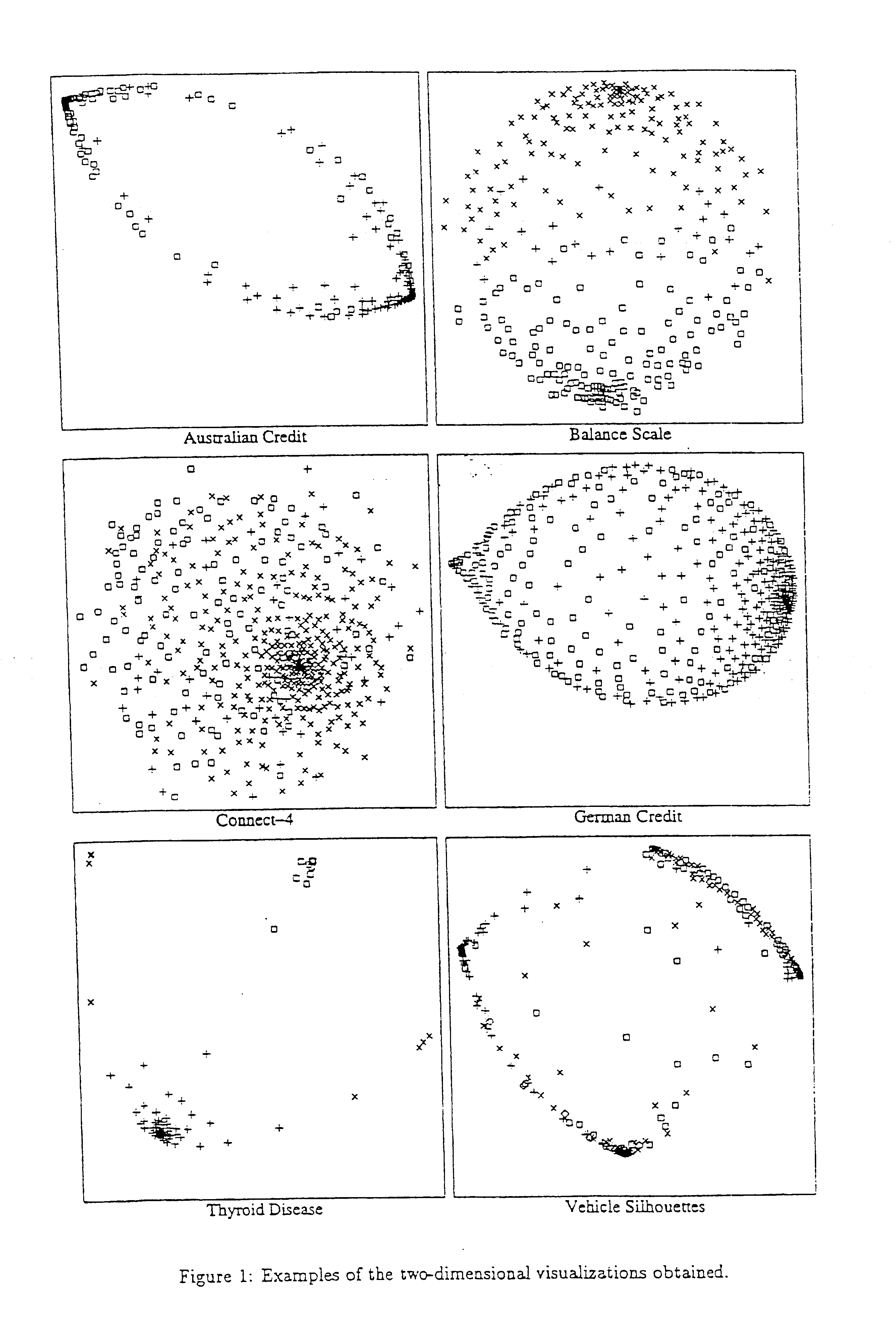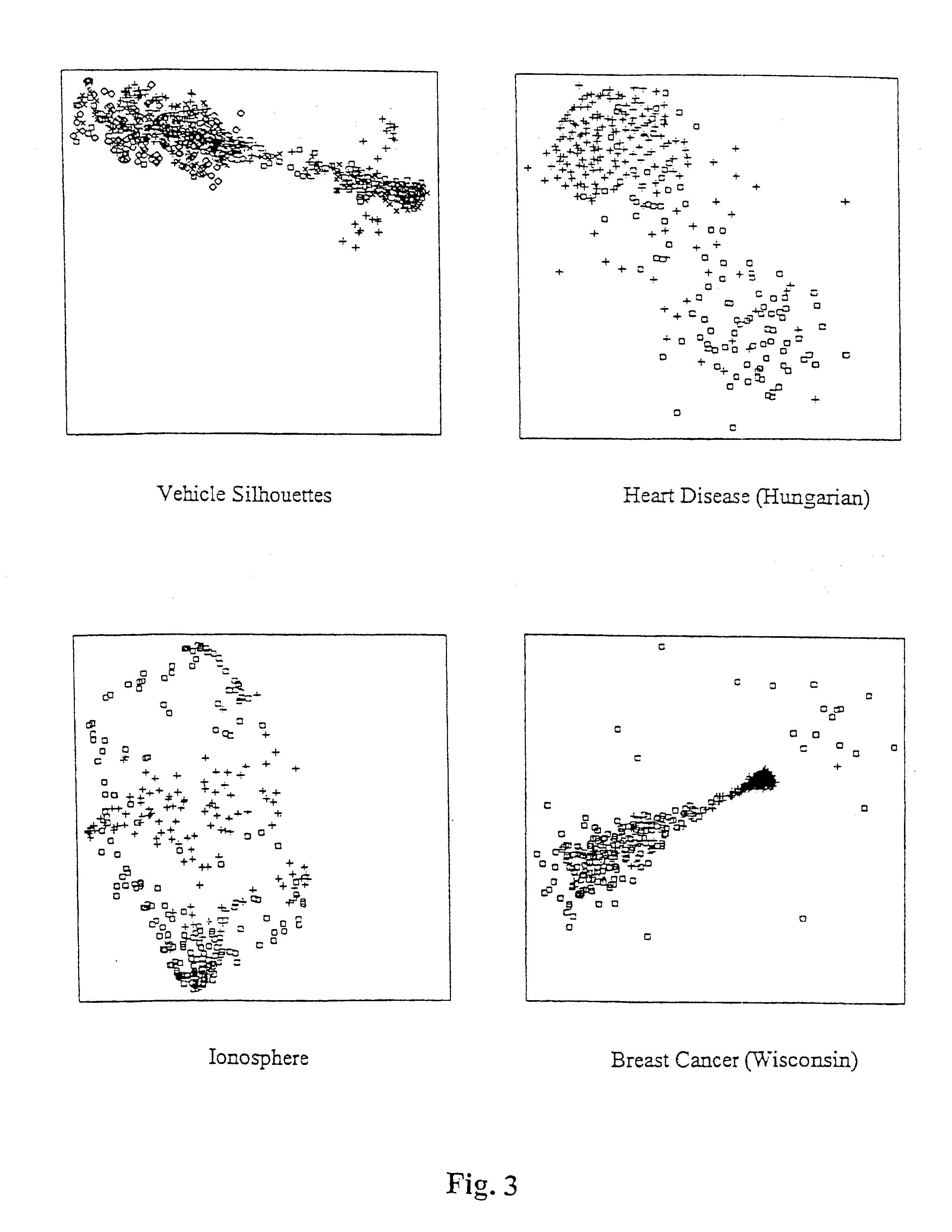Visualization method and visualization system
a visualization method and visualization system technology, applied in the field of computerized system modeling, can solve problems such as problems, weak connection, and difficulty in seeing and comprehending the overall significance, and achieve the effect of flexible visualization methods
- Summary
- Abstract
- Description
- Claims
- Application Information
AI Technical Summary
Benefits of technology
Problems solved by technology
Method used
Image
Examples
second embodiment
In a method according to the invention, the pairwise distance between two data vectors xi and xj is defined by
d(xi,xj)=−log P(MAP(xi)=MAP(xj)), (4)
where MAP(xi) denotes the maximum posterior probability assignment for the target attributes X1, . . . , Xm with respect to the selected predictive distribution. Similarly as the distance metric defined in Equation 3, also here the distance between two data vectors xi and xj is determined using a first instance P(X1, . . . , Xm|xiC) and a second instance P(X1, . . . , Xm|xjC) of the selected predictive distribution. The distance metrics defined in Equations 3 and 4 are supervised, as some attributes are selected as target attributes. Consequently, a visualization method using either of these distance metrics is a supervised method.
third embodiment
It is possible to define the pairwise distances by using more than one conditional predictive distribution. In a method according to the invention, the pairwise distance between two data vectors xi and xj is defined in the following way d (xi,xj)=-∑k=1n log P (MAPk (xi)=MAPk (xj)),(5)
where MAPk denotes the maximum posterior probability value of target attribute Xk with respect to predictive distribution P(X1|xC). This means that each attribute Xk is in turn selected as a target attribute in a conditional predictive distribution. The distance metric defined in Equation 5 is unsupervised, as all attributes are treated equally. When this metric is used with unsupervised models, it is usually enough to construct one model, as various conditional predictive distribution can be obtained from an unsupervised model. If this metric is used With supervised models, it may be necessary to construct several probabilistic models. For example, if the naive Bayes model is used, typicall...
fourth embodiment
In a method according to the invention, the pairwise distance between two data vectors xi and xj is defined as the symmetric Kullback-Leibler-divergence (see, for example, (Gelman, Carlin, Stern, Rubin, 1995)) between a first instance P(X1, . . . , Xm|xiC) and a second instance P(X1, . . . , Xm|xjC) of the predictive distribution conditioned with the variable value assignments present in a data vector. A Kullback-Leibler divergence has an infinite range, which may lead to computational problems with practical implementations. Preferably, the visualization vectors are found minimizing Equation 2, in other word using the Sammon's mapping.
It is also possible to use a predictive distribution to define the visual locations directly. In a method according to a further embodiment of the invention, the visualization space is a space where each dimension represents directly a component of an instance of a predictive distribution. A component of an instance of a predictive distribution means ...
PUM
 Login to View More
Login to View More Abstract
Description
Claims
Application Information
 Login to View More
Login to View More - R&D
- Intellectual Property
- Life Sciences
- Materials
- Tech Scout
- Unparalleled Data Quality
- Higher Quality Content
- 60% Fewer Hallucinations
Browse by: Latest US Patents, China's latest patents, Technical Efficacy Thesaurus, Application Domain, Technology Topic, Popular Technical Reports.
© 2025 PatSnap. All rights reserved.Legal|Privacy policy|Modern Slavery Act Transparency Statement|Sitemap|About US| Contact US: help@patsnap.com



